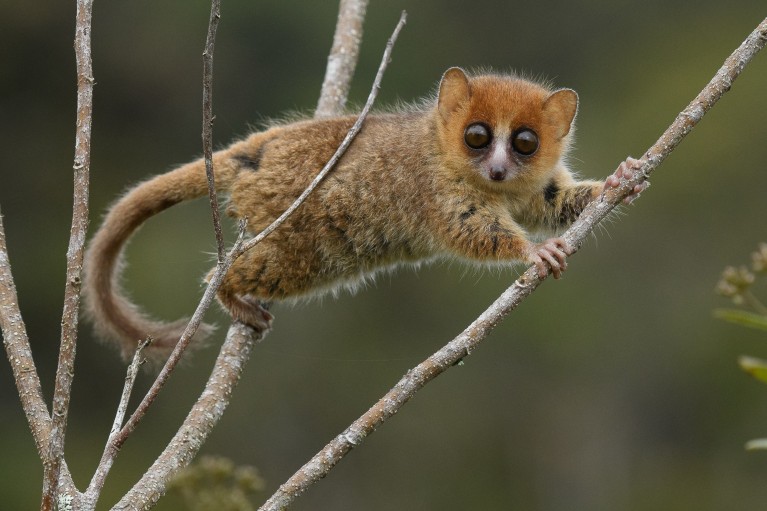
Brown Mouse Lemur (Microcebus rufus), one of the 104 species of lemurs that are currently threatened with extinction. A total of 17 species of lemurs have gone extinct since humans arrived on Madagascar. Credit: Chien C. Lee.
Climate change and human activity are driving a wave of extinction in Madagascar, one of the world's foremost biodiversity hotspots, a new study in Nature Communication has revealed.
A team led by Luis Valente, assistant professor at the University of Groningen, and senior researcher at the Naturalis Biodiversity Center, showed that over the past decade, the number of Madagascar’s mammal species under threat of extinction increased from 56 in 2010 to 128 in 2021. The researchers also forecast future impacts by compiling data on 249 living and recently extinct mammals. They warned it may take millions of years to recover via evolution and the arrival of new species from other regions.
Using the data on the evolutionary history of the species and statistical models of their geographical distribution over time, the researchers concluded that if current threats were not mitigated, recovering the species lost since humans arrived in Madagascar would take up to three million years. It would take more than 20 million years if species currently at risk of extinction were lost as well.
To avoid the long-lasting biodiversity losses, the authors called for immediate conservation efforts that should include socio-economic improvements for local human populations. They recommended reducing forest loss in the remaining natural habitats, and limiting artisanal and commercial resource exploitation of hardwoods, animals for the bushmeat trade and others.
Madagascar’s unique plants, animals, and fungi largely evolved on the island and . These include the Madagascar pochard, giraffe weevil, blue coua, panther chameleon, tomato frog, and lemurs, including sifaka and fossa. Activities, such as logging mahogany and other tropical hardwoods, and hunting to feed illegal bushmeat markets, are contributing to the imminent extinction wave. The authors argued that protection of Madagascar’s biodiversity could be enhanced by improving the living standards and well-being for citizens. According to UNICEF, more than two thirds of children in Madagascar live in poverty without access to education, health, housing, nutrition, sanitation or safe water.
Implications for other biodiversity hotspots
Species’ extinction has been associated with human activities since prehistoric times. Christopher Johnson, professor of wildlife conservation at the University of Tasmania in Australia, argued that while the list of known recent extinctions is still only a small fraction of all species on the planet, extinction rates in the recent past are at least 100 times faster than in pre-human times, and that the pace of extinction has accelerated. “If this continues, the loss of species will soon amount to a large fraction of all species on the planet,” Johnson said.
Madagascar offers us a chance to protect ecosystems that are still very diverse and (largely) intact. Other places that compare with Madagascar are inaccessible parts of islands like New Guinea or large rainforests like the Amazon,” Valente told Nature Africa.
The lesson from Madagascar, Valente said, is that even regions that are relatively isolated and apparently "pristine" can quickly become threatened due to habitat destruction and overexploitation. He noted that African regions like the forests of the Congo Basin, the islands of the Gulf of Guinea and high elevation Afro-montane ecosystems are similar to Madagascar in terms of their proportion of endemic species.
“These places should receive conservation priority while they are still in a healthy condition,” Valente added.
Olumide Idowu, climate activist and co-founder of the International Climate Change Development Initiative, said this would require prioritizing environmental stewardship at all levels, and emphasising the contribution of local activities to the global implications of species’ extinction. He said people directly involved in the activities driving the extinction wave may not fully understand the environmental impacts of their actions because there is not much awareness on environmental stewardship.
“It is important for people to know that protecting nature isn’t just a task for the government alone, it is a collective responsibility for all of us,” Idowu told Nature Africa.
